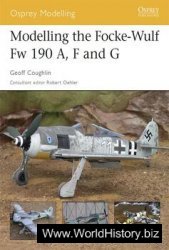The period from a. d. 750 to 1100, which had seen collapse or decline in many parts of the southern Maya lowlands, was arguably the period of greatest florescence in northern Yucatan. It is a complex period, still poorly understood, and this volume reflects the continuing debates on the chronology of the different developments there. All of the chapters here on the northern lowlands accept only slightly variable forms of a partial to near total “overlap” of the apogees of Chich’en Itza and the Puuc centers—with the eastern Coba region declining only slightly earlier (Carmean et al.. Chapter 19; Suhler et al.. Chapter 20; Ringle et al.. Chapter 21; Cobos, Chapter 22).
As summarized in those chapters, the Puuc centers began to grow in the mid-eighth century, to develop new architectural styles and motifs, and to introduce concepts from the Gulf Coast and Oaxaca, as well as from the lowlands to the south. At this time there was probably at least some migration of elites and populations from Peten and southern Campeche centers (Carmean et al.. Chapter 19; Suhler et al.. Chapter 20; see also Scheie and Mathews 1998: 258-260). During this Terminal Classic period, Puuc centers grew, population dispersed into new and sometimes marginal areas, and new centers were established (Carmean et al.. Chapter 19). As with Seibal, Caracol, and other centers that thrived, rather than declined, in the ninth century, the Puuc rulers of Uxmal and other centers drew upon an amalgam of new concepts and reoriented Classic-period imagery to legitimate power. Puuc architecture and sculpture also may have incorporated iconography of the cult of Quetzalcoatl, the feathered-serpent deity, which is even more prominent at the rival center of Chich’en Itza in central Yucatan (Ringle et al. 1998).
While initially a series of small kingdoms, Puuc centers developed larger regional alliances. Intensive warfare is attested by fortifications around the epicenters of Uxmal and other major Puuc sites and by scenes of battle in murals, graffiti, and artifacts (Carmean et al.. Chapter 19; Walters and Kowalski 2000; Scheie and Mathews 1998: 234—235). The rapid growth and immigration to this area, combined with status-rivalry and its associated costs in labor and conflict, may have created a political environment of rich display but with underlying stresses, similar to processes in the southwestern lowlands a century earlier. Yet in the north, the need for centralization of authority through alliance or conquest may have been even greater, given the reliance on careful cooperative husbandry of scarce water sources (Dunning 1992; McAnany 1990).
Faced with the problems and possibilities of rapid population increase and the end of inter-elite trade with the south, leadership in the Puuc region carried out large-scale and intensified architectural programs and campaigns of conquest (Carmean et al.. Chapter 19). As with stress responses in the south in the eighth century, in the northern lowlands in the ninth and early tenth centuries rulers were investing in spectacular architecture, expansion of polities, and experimentation with new political formations. Puuc centers also experimented with new Mexican religious ideologies and with power-sharing arrangements involving councils of lineage heads (McAnany 1995; Ringle et al. 1998; Carmean et al.. Chapter 19). As at Copan and elsewhere, popol na or council houses allowed rulers to confer with lineage heads and local leaders (Kowalski 1987, 1994; Kowalski and Dunning 1999). Such lineage councils or multepal forms of government were more evident at some Puuc centers, such as Xcalumkin, and would later become characteristic of Postclassic states (Carmean et al.. Chapter 19; cf. Grube 1994b). We can speculate that these experiments may have been more successful in the Puuc region because long-distance trade along the Gulf of Mexico, inland-coastal trade, and water storage systems had helped a more flexible set of institutions of governance to evolve earlier there—institutions that were more directly involved in economics and subsistence.
Carmean et al. (Chapter 19) describe how by the late ninth and early tenth centuries, competition, warfare, and alliance had ended in the unification of all of the western Puuc cities under the leadership of the king of Uxmal, designated “Lord Chac,” and his associates (see also Grube 1994b: 323-324; Scheie and Mathews 1998). This ruler, through sharing power with other leaders, revived much of the symbolism and monuments of the Classic-period k’uhul ajaw institution of divine mlership. His expansionist efforts affected the Coba sphere of influence to the east, where fortifications may have first been constructed around centers at this time (Suhler et al.. Chapter 20; Ringle et al.. Chapter 21; Carmean et al.. Chapter 19). The chapters on Yaxuna (20) and Ek Balam (21), as well as other recent assessments (see Andrews and Robles 1985; Robles and Andrews 1986; Bey et al. 1997), describe a complex ninth-and tenth-century central Yucatec landscape of fortified centers, battles, and sieges (e. g., Suhler et al.. Chapter 20; Suhler and Freidel 1998; Webster 1978), and shifting ceramic assemblages. Termination rituals of architectural destruction at some sites and subsequent occupation with western Cehpech Puuc ceramics may indicate that the conquest of these centers was one factor in the decline of the eastern hegemony of Coba and that center itself (Chapters 20 and 21; cf Andrews and Robles 1985; Robles and Andrews 1986).
Ultimately, however, the reign of Lord Chac and the Terminal Classic political hegemonies of the Puuc cities also declined. The stresses of intersite competition and population increase may have been exacerbated by drought (Hodell et al. 1995) and by conflict with the competing regional alliance of Chich’en Itza (Robles and Andrews 1986; Andrews and Robles 1985; Cobos, Chapter 22). Shortly after the reign of Lord Chac all monumental construction ceased, and by a. d. 950 the city was in full decline. Other great Puuc cities such as Sayil followed a similar trajectory and were largely abandoned by the end of the tenth century (Tourtellot et al. 1990; Tourtellot and Sabloff 1994). Even with innovative characteristics in economics and ideology, the Puuc centers and their modified form of Classic-period politics had declined by the eleventh century.
The expansion of the Puuc hegemony, the decline of the southern lowland kingdoms, and the initiation of the “Sotuta sphere” cult center and conquest state of Chich’en Itza were all reflected in central and eastern Yucatan and Quintana Roo in events and processes that are still poorly understood. Yet the chapters in this volume indicate that the general pattern is now clear. Coba and its hegemonies declined only slightly later than the central lowland centers with which it had close ecological, ceramic, architectural, and sculptural similarities. Uxmal and the Puuc centers expanded at the expense of Coba’s sphere of influence, yet coeval with the expansion of the modified, distinctive, northern Yucatan hegemony of Chich’en Itza (Cobos, Chapter 22) marked by the presence of “Sotuta” ceramics and changes in architectural styles.
In Chapter 22 Cobos has marshaled and synthesized the recent evidence to demonstrate definitively a near “total overlap” model (Sabloff and Andrews 1986a; Robles and Andrews 1986; Lincoln 1986). Perhaps a mix of revitalization of Classic-period ideologies, foreign influences, participation in inter-regional commodity markets, and the creation of new cults and pilgrimage centers allowed Chich’en Itza to outlive its rivals (Carmean et al.. Chapter 19; Freidel 1986d; Ringle et al. 1998). As the Cobd regional kingdom rapidly declined in the east, the western Puuc and northern Chich’en hegemonies came into conflict (Carmean et al.. Chapter 19; Suhler et al.. Chapter 20; Andrews and Robles 1986). The Puuc cities eventually lost this struggle—largely because of pressure and competition from Chich’en Itza.
Archaeologically, these struggles were fossilized in the chronological record by the destruction of epicenter architecture and formal “rituals of termination” involving the burning and burial of monuments and deposits of “desacralizing” broken ceramics in temple and palace contexts (Suhler et al.. Chapter 20). Some of these sites continued to have significant occupations, but with new Sotuta ceramic styles (Cobos, Chapter 22; Suhler et al.. Chapter 20; Andrews and Robles 1985; Robles and Andrews 1986). During this period. Terminal Classic Seibal, Altar de Sacrificios, Nohmul, Caracol, central and eastern Peten, and other areas show evidence of interaction with the north—with possibly even direct movements of elites to and from Chich’en Itza (Tourtellot and Gonzalez, Chapter 4; Rice and Rice, Chapter 7; Laporte, Chapter 10; Chase and Chase 1982; A. Chase 1985b; Ball 1974b; Ringle et al. 1998; Kowalski 1989; Jones 1998).
Yet Chich’en Itza’s ascendancy over its neighbors was followed within a century, perhaps within even just a few decades, by its own decline between a. d. 1050 and 1100, according to the most recent chronologies (Cobos 1998a, 1998b,
Chapter 22). One explanation for the Chich’en decline is Robles’s and Andrews’s speculation that the Itza polity was heavily dependent on predation and tribute. With the decline of the traditional Classic Maya centers of the Coba area and the more innovative Puuc hegemony to the west, the lords of Chich’en found their flow of tribute resources and labor rapidly diminished (Robles and Andrews 1986: 89). Recent interpretations of climatic change and possible desiccation in the northern lowlands (Braswell et al.. Chapter 9; Hodell et al. 1995) are hard to reconcile with the Puuc and the final Chich’en florescences. The alleged drought began just as these centers started to thrive and ended before their eleventh-century decline (Carmean et al.. Chapter 19; Cobos, Chapter 22; Hodell et al. 1995). While climatic changes surely did have an affect on the complex culture history of these northern zones, the interplay among political changes, regional ecological and climatological systems, and general climate shifts appears to have been extremely complex and variable over the a. d. 800 to 1100 period—as it was throughout Maya prehistory (e. g., Demarest et al. 2003; Dunning and Beach, in press). In any case, the battling alliances of northern Yucatan in the Terminal Classic period represented the last stage in the end of the Classic Maya political and economic system. Chich’en may have delivered the final blow to revitalized, modified forms of the Classic-period political order.




 World History
World History









